Taking the first step! The story of Takigawa YORIAI, a general incorporated association running the “Akame 48 Waterfalls Campsite”, a fun community stopover
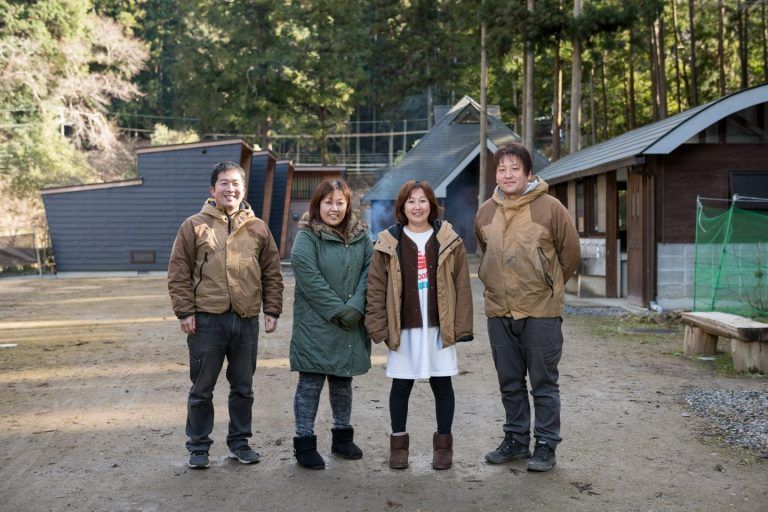
Nabari City, located in the Iga region of western Mie Prefecture, is within an hour's train ride to Osaka. Located halfway between the city and countryside, it’s blessed with an abundance of water and forest villages. Here, the Akame 48 Waterfalls offers a variety of waterfalls large and small, and scenery that highlights the beauty of every season.
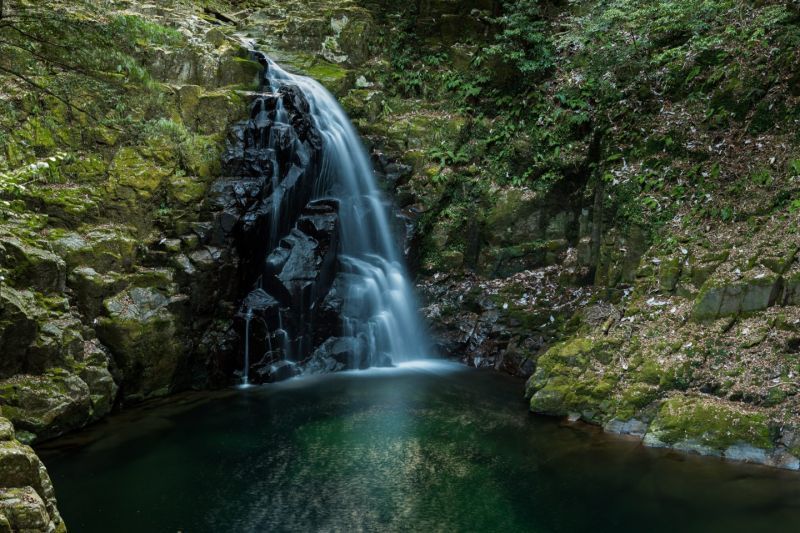
▲Fudodaki Falls, one of the Akame 48 Waterfalls famous “Gobaku” (Five Waterfalls)
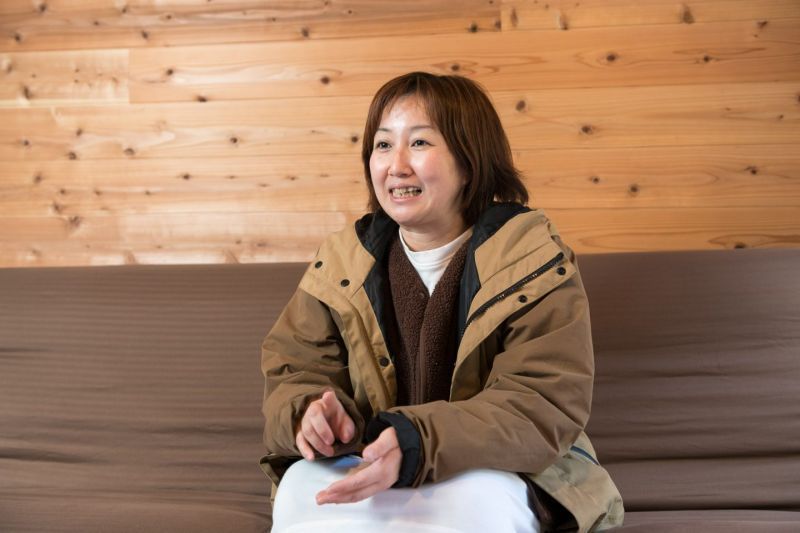
Mai: We come here to play with our children, so the campground is a place with a lot of fond memories for us Akame residents. When we heard about the closure of the campground, we didn’t want to see an important community resource disappear- so we asked the city government if we could keep it. Everyone said that the decision to close the campground had already been made and that it was impossible to overturn the decision, but thanks to community cooperation, the city government decided to give us a chance.
Mai, Hiroyuki, and board director Horiuchi ran the campground jointly with the Nagasaka Farmers Association (its previous operator) for a year starting in 2018 under a designated management system*. Beginning in 2019, Mai, Hiroyuki and Horuichi officially began running the campground by themselves, each with their own role. Together, they launched "Takigawa YORIAI" and reopened the Akame 48 Waterfalls Campground.
*A system under which public facilities are managed by private companies with expertise in the field
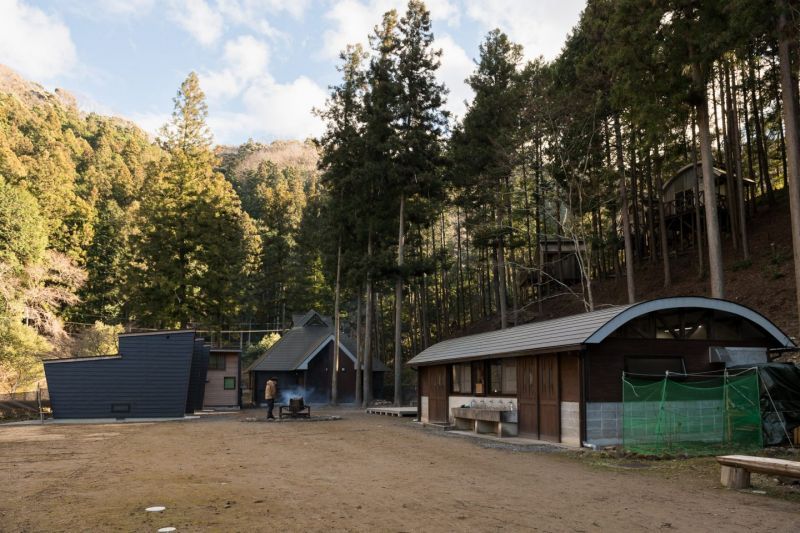
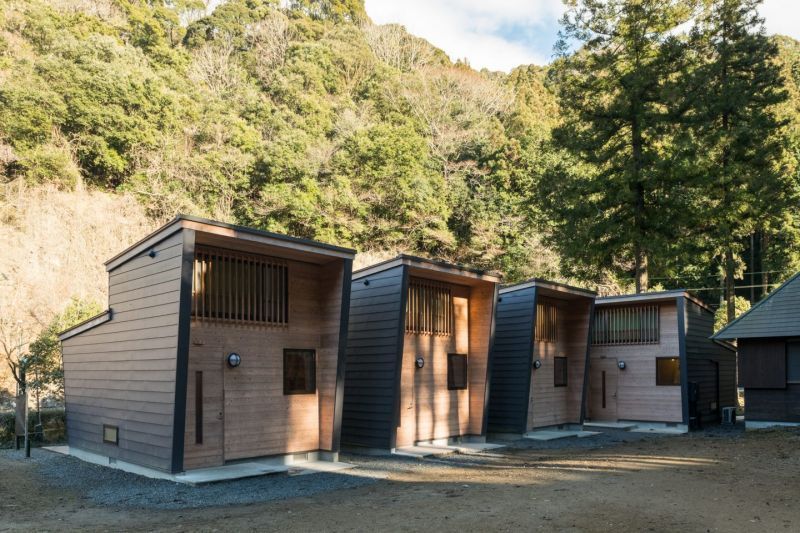
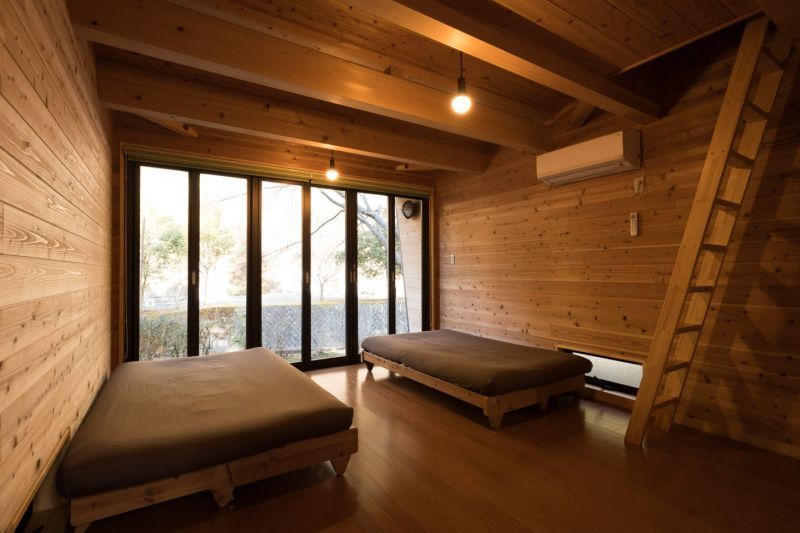
A Community Effort
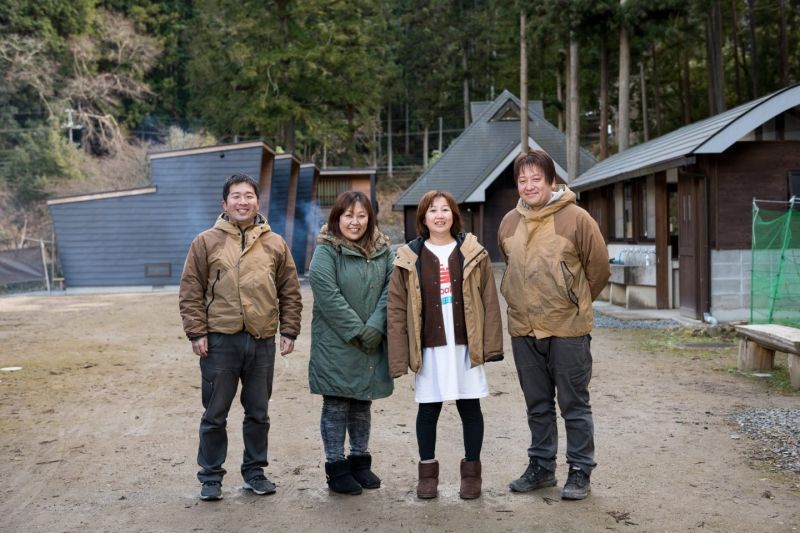
▲From left: Mr. Horiuchi (director), Ms.Arima (staff), Mai Shigemori (executive director) and Hiroyuki Shigemori (representativedirector).
The effort put in by Mai and her colleagueshas had an impact on the other locals. Inspired by the launch of TakigawaYORIAI, a classmate of Hiroyuki opened a local izakaya (tavern) to revitalize the town of Akame.
Mai: Everyone’s like, "’Let’s do it!’ Thingsare definitely firing up.”
The town's neighborhood association holdsevents for children at the campground, and in May they hang carp streamers inthe Taki River next to the campground.
In 2020, a new community-wide project wasborn. The aim was to rediscover the charms of the community through exchangesbetween locals and university students from outside the city.
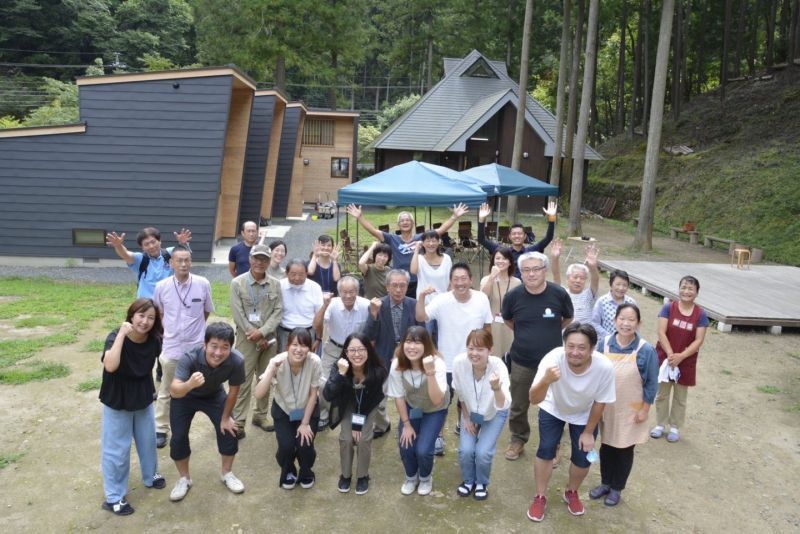
Taking the First Step
Mai and her colleagues don’t want to make just a campground- rather, they hope to provide a place for the local community, where locals can play an active role.
Mai: I have five children. I worry that they will leave to work in Osaka, Nagoya, Tokyo, etc. in the future. I hope that the campgrounds will be a place for local children to take on new challenges, a starting point they could use if they decide they want to start something new like their own business.
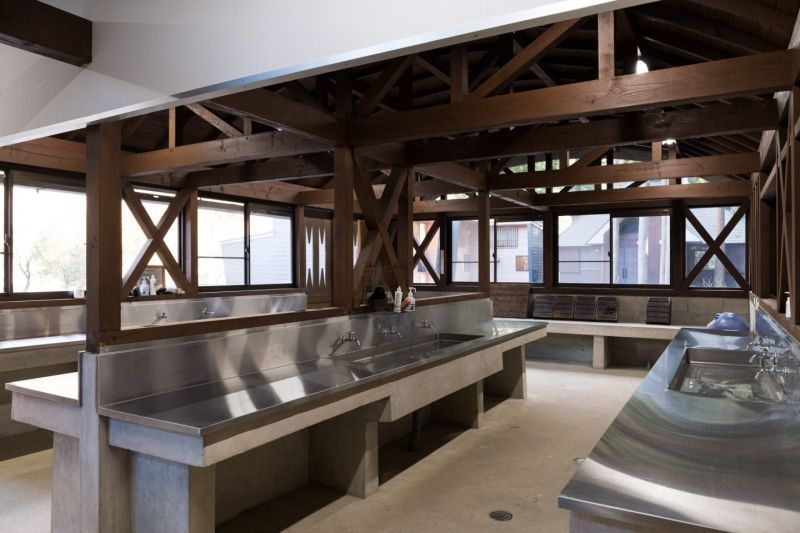
▲The cooking facility has been renovated for spacious use
Staff member Ms. Arima has a dream ofopening a restaurant. She is using the cooking area to experiment withsingle-day lunch operations, serving customers that gather on the deck- andenjoying the challenge!
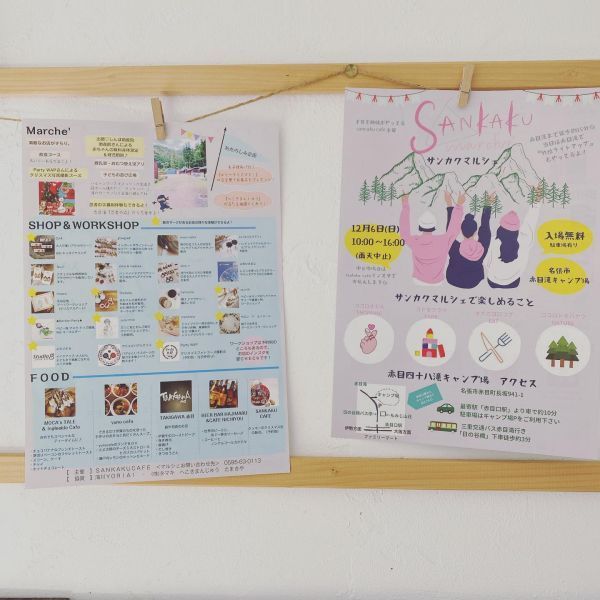
▲Flyers for markets held at the campground so far
Ideas for Meeting Community Needs
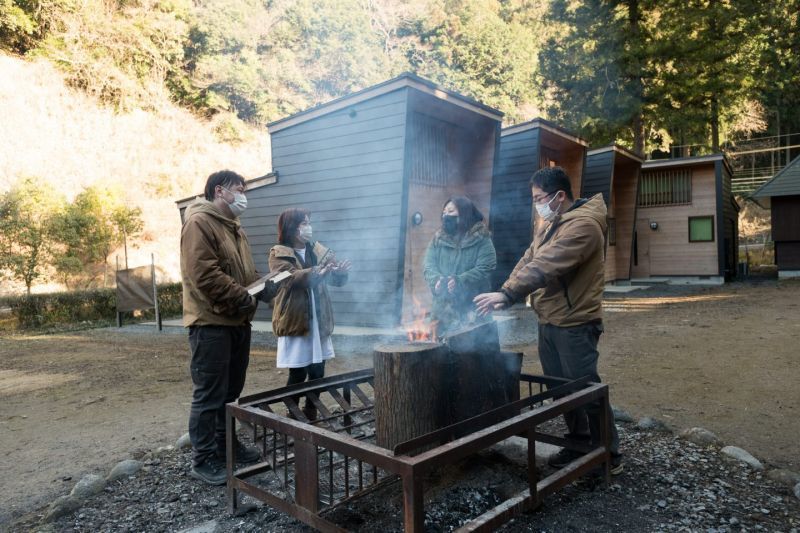
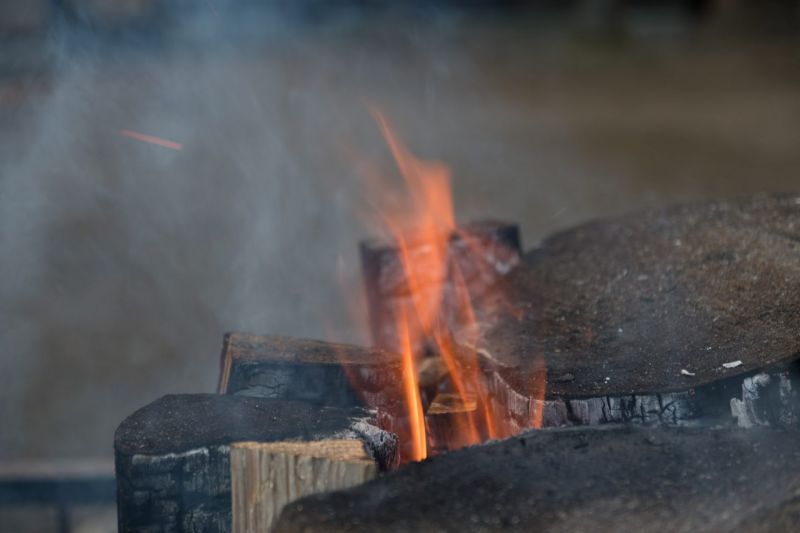
Hiroyuki: For example, if a hundred people come to Akame to experience agriculture and even one of them is interested in agricultural work in the countryside, it might bring them to Akame in the future. Those are the kinds of opportunities we are trying to create.
They are also considering the possibility of developing a new accommodation plan that focuses on the experience of immigrating to Nabari and Akame.
Mai: Sometimes we’re consulted by campsite guests who are looking for a house to move into, and we’ve also been asked by locals if we know anyone looking to rent. We think it would be great if we could create a system that successfully connects both groups to each other.
Last year, director Horiuchi renovated his grandmother’s family house, named it "Yoshidaya," and began running it as a rental house. Through cooperation with local programs, he hopes to realize a "trial migration" program that would allow people to actually experience what it would be like moving to the area.
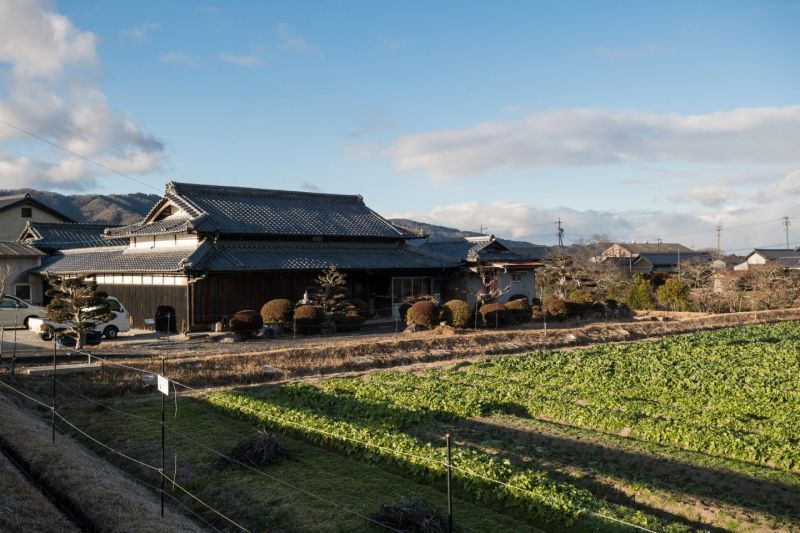
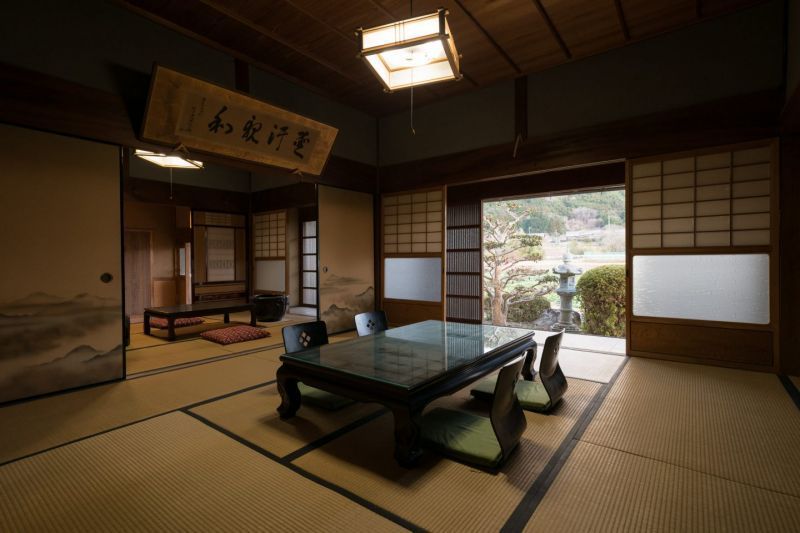
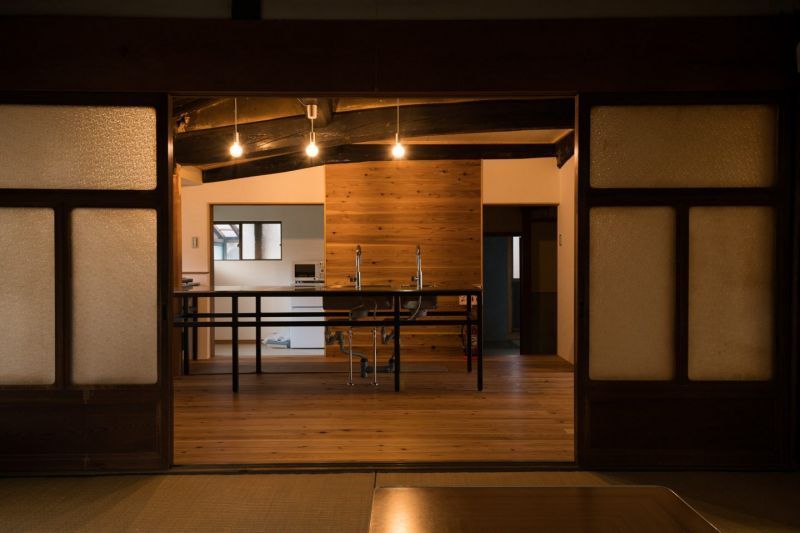
▲Former plasterers and plumbers in the areawere willing to help Mr. Horiuchi with the kitchen renovations
A Business that Brings Happiness to the Community
Mai loves to eat. When asked to name herfavorite food, she replied cheerfully, "Iga rice!"
Mai: I came to Mie Prefecture from Ehimewhen I got married. I was impressed by the delicious water, rice, and meathere! I’m so grateful to have been able to come to an area with such greatfood.
However, with the price of Iga ricefalling, some farmers are giving up rice production.
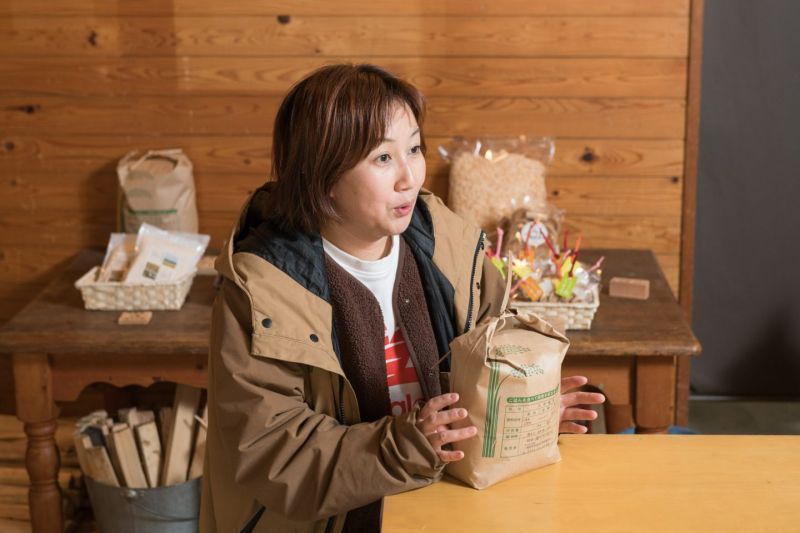
To motivate the farmers, Mai and her colleagues started purchasing rice directly from neighboring farmers and selling it at campsites and on the internet last year. They are striving to develop this into a profitable business that will lead to profits for both the farmers and themselves.
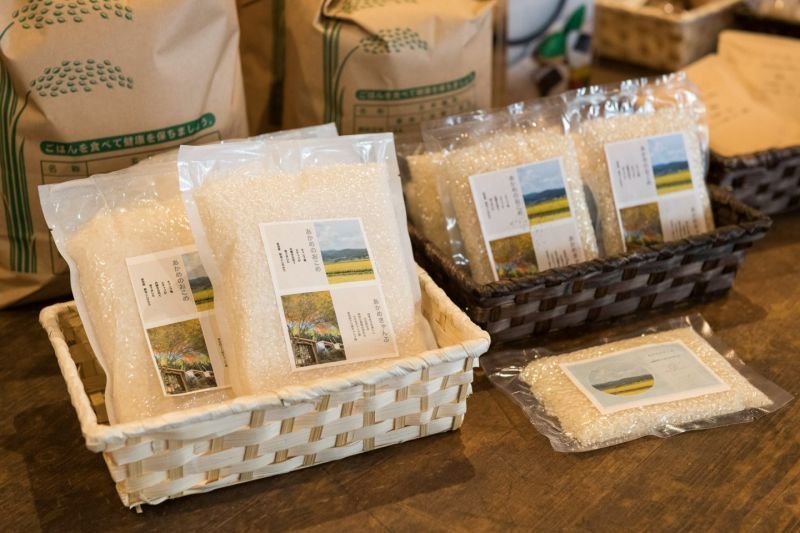
▲Miniature Iga rice packets are also sold for solo campers. Last year, they distributed the rice at campgrounds to let people know just how delicious Iga rice is.
Mai: When we do something, we always try to make it a win-win situation. We are committed to only doing projects that will make everyone happy. We want to do business in a way that will bring the locals happiness and improve the local economy.
To me, Mai and her colleagues, who have revived an important resource of the community, seem to be hale, hearty and happy. The challenges facing the countryside are tough, but by combining the strengths of Mai and the community, they’ve been able to turn these challenges into an enjoyable future.
General Incorporated Association Takigawa YORIAI
Akame 48 Falls Campground
〒518-0469 941-1 Nagasaka, Akame-cho, Nabari City, Mie Prefecture
tel: 0595-63-9666
HP: https://www.akame-camp-ground.com
Instagram: https://instagram.com/akame_camp_site/
Facebook: https://www.facebook.com/akamecampsite/
Yoshidaya, an old private house for rent
Postal code 518-0464
44 Kashiwabara, Akame-cho, Nabari City, Mie Prefecture
HP: https://yosidaya.net/
Instagram: https://instagram.com/kominka_yado_yosidaya/
Covering day: January 20, 2022
Written: canny (Web magazine OTONAMIE)
Photo: Yutaka Matsubara (https://matsubara-yutaka.com/)
This article is a translation and reprint of the content created by the project of Departmentof Agriculture, Forestry and Fisheries, Mie Prefectural Government.
Original article: https://www.sato.pref.mie.lg.jp/feature_news/